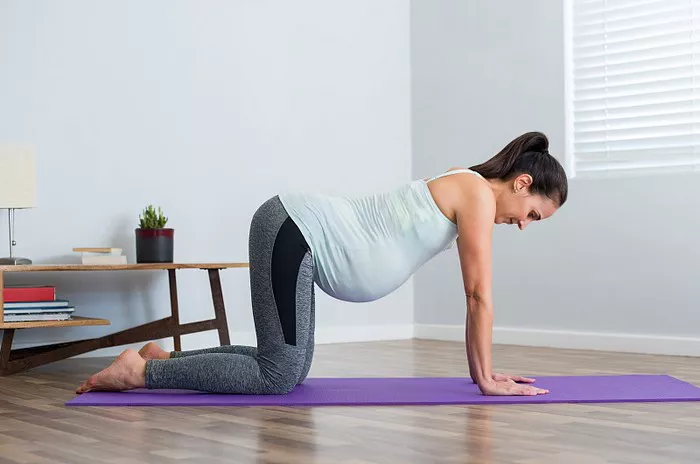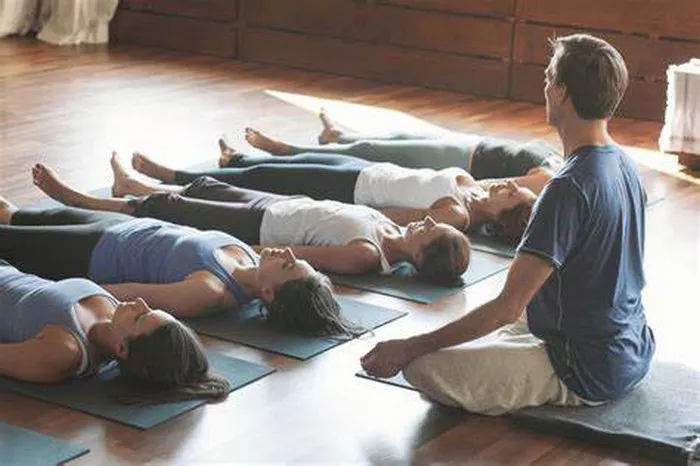Hatha Yoga, a widely practiced form of yoga, has a rich history and a profound impact on the physical, mental, and spiritual health of its practitioners. Originating in ancient India, it has evolved over centuries and spread across the globe, attracting people from diverse backgrounds. The term “Hatha” is derived from the Sanskrit words “ha” meaning sun and “tha” meaning moon, symbolizing the union and balance of opposing forces within the body and mind.
At its core, Hatha Yoga is a holistic practice that combines physical postures (asanas), breathing techniques (pranayama), and meditation to promote harmony and well-being. It offers a path to self-awareness, self-discipline, and self-realization. Whether you are seeking to improve flexibility, reduce stress, or find a deeper sense of purpose, Hatha Yoga provides a framework for personal growth and transformation. In the following sections, we will explore the various aspects that define and distinguish Hatha Yoga.
The Origins and Evolution of Hatha Yoga
Ancient Roots: Hatha Yoga has its roots in the spiritual and philosophical traditions of ancient India. It was developed by yogis who dedicated their lives to exploring the connection between the body, mind, and spirit. These early practitioners passed down their knowledge through oral traditions, which were later documented in ancient texts such as the Hatha Yoga Pradipika and the Gheranda Samhita.
Influence of Indian Philosophy: It was deeply influenced by Hinduism and Tantra. The concepts of karma, dharma, and moksha are intertwined with the practice of Hatha Yoga. The Tantric traditions contributed to the understanding of the body’s subtle energy channels (nadis) and the awakening of the Kundalini energy, which is believed to reside at the base of the spine and can be activated through specific yoga practices.
Spread and Adaptation: Over time, Hatha Yoga spread beyond India and was adapted to different cultures and lifestyles. In the 20th century, it gained popularity in the Western world, where it was modified to suit the needs and preferences of modern practitioners. Today, there are numerous schools and styles of Hatha Yoga, each with its unique approach and emphasis.
Physical Postures (Asanas)
Types of Asanas: Hatha Yoga encompasses a wide variety of asanas, including standing, sitting, lying down, and twisting postures. Standing asanas like Tadasana (Mountain Pose) help to improve balance and posture, while sitting asanas such as Padmasana (Lotus Pose) enhance flexibility in the hips and knees. Twisting asanas like Ardha Matsyendrasana (Half Lord of the Fishes Pose) massage the internal organs and improve spinal mobility.
Benefits for the Body: Regular practice of asanas leads to increased flexibility, strength, and endurance. It helps to tone the muscles, improve joint health, and enhance overall physical fitness. For example, the Warrior series of asanas (Virabhadrasana I, II, and III) strengthens the legs, ankles, and core, while also improving balance and focus.
Alignment and Technique: Proper alignment is crucial in Hatha Yoga asanas to avoid injury and maximize the benefits. Each posture has specific instructions for the placement of the feet, hands, spine, and head. Practitioners learn to engage the right muscles, breathe deeply, and hold the postures with stability and grace. This attention to detail not only improves the physical experience but also cultivates mindfulness.
Breathing Techniques (Pranayama)
The Significance of Breath: Pranayama is an essential component of Hatha Yoga. The breath is considered the life force, or “prana.” By controlling the breath, practitioners can influence their physical and mental states. Different pranayama techniques have specific effects on the body and mind.
Common Pranayama Practices: Anulom Vilom (Alternate Nostril Breathing) is a popular pranayama technique that helps to balance the energy in the body and calm the mind. Kapalabhati (Skull Shining Breath) is a cleansing breath that energizes the body and improves digestion. Deep diaphragmatic breathing, such as Ujjayi Pranayama (Victorious Breath), is used in many asanas to enhance focus and stability.
Benefits of Pranayama: It increases the supply of oxygen to the body, improves lung capacity, and relaxes the nervous system. Pranayama also helps to reduce stress, anxiety, and hypertension. By regulating the breath, practitioners can achieve a state of calm and clarity, preparing the mind for meditation.
Meditation in Hatha Yoga
Meditation Techniques: Hatha Yoga incorporates various meditation techniques. Mindfulness meditation, where one focuses on the present moment without judgment, is often practiced. Mantra meditation involves the repetition of a sacred sound or word to quiet the mind. Visualization meditation uses mental imagery to induce a state of relaxation and concentration.
Cultivating Inner Peace: Meditation in Hatha Yoga helps to cultivate inner peace and self-awareness. By sitting in silence and observing the thoughts and emotions that arise, practitioners learn to detach from them and find a deeper sense of stillness within. This practice is beneficial for reducing mental chatter, improving concentration, and enhancing emotional well-being.
Connection to Spirituality: For many, meditation in Hatha Yoga is a spiritual practice that allows them to connect with a higher power or their inner selves. It provides a space for self-reflection and exploration of the deeper meaning and purpose of life. This spiritual dimension adds a profound aspect to the overall practice of Hatha Yoga.
The Philosophical and Spiritual Dimensions
The Concept of Balance: As mentioned earlier, the balance between the sun and moon energies is a fundamental concept in Hatha Yoga. This extends to the balance between the physical and mental, the active and passive, and the masculine and feminine aspects within oneself. By striving for this balance, practitioners aim to achieve a state of wholeness and harmony.
Self-Realization and Enlightenment: Hatha Yoga is seen as a path towards self-realization and enlightenment. Through the practice of asanas, pranayama, and meditation, one peels away the layers of the ego and false identities, uncovering the true essence of the self. This journey of self-discovery is a central aspect of the philosophical underpinnings of Hatha Yoga.
Ethical and Moral Guidelines: Hatha Yoga also adheres to certain ethical and moral principles. These include non-violence (ahimsa), truthfulness (satya), non-stealing (asteya), continence (brahmacharya), and non-possessiveness (aparigraha). These principles are not only applied in the yoga practice but also in one’s daily life, guiding interactions with others and the world.
The Benefits of Hatha Yoga in Modern Life
Stress Management: In today’s fast-paced and stressful world, Hatha Yoga offers a refuge. The combination of physical movement, breath control, and meditation helps to reduce stress levels. The relaxation response induced by yoga practice counteracts the effects of the body’s stress hormones, leading to a calmer and more centered state of being.
Improved Physical and Mental Health: Regular practice of Hatha Yoga has been shown to improve physical health markers such as blood pressure, cholesterol levels, and flexibility. Mentally, it helps to reduce anxiety, depression, and insomnia. It also enhances cognitive function, memory, and creativity, enabling individuals to perform better in their daily activities.
Enhanced Quality of Life: Beyond the physical and mental benefits, Hatha Yoga enriches the overall quality of life. It promotes a sense of self-confidence, self-acceptance, and gratitude. The community aspect of yoga classes also provides a social support network, fostering connections and a sense of belonging.
Conclusion
In conclusion, Hatha Yoga is a comprehensive and profound practice that offers a multitude of benefits for the body, mind, and spirit. Its origins in ancient India, its unique combination of physical postures, breathing techniques, and meditation, and its philosophical and spiritual dimensions make it a holistic approach to personal growth and well-being. Whether you are a beginner or an experienced yogi, Hatha Yoga provides a journey of self-discovery and transformation. By incorporating Hatha Yoga into our lives, we can find balance, peace, and a deeper connection to ourselves and the world around us. As we continue to explore and practice Hatha Yoga, we unlock its potential to enhance our lives and lead us towards a more fulfilling and meaningful existence.
Related topics
























